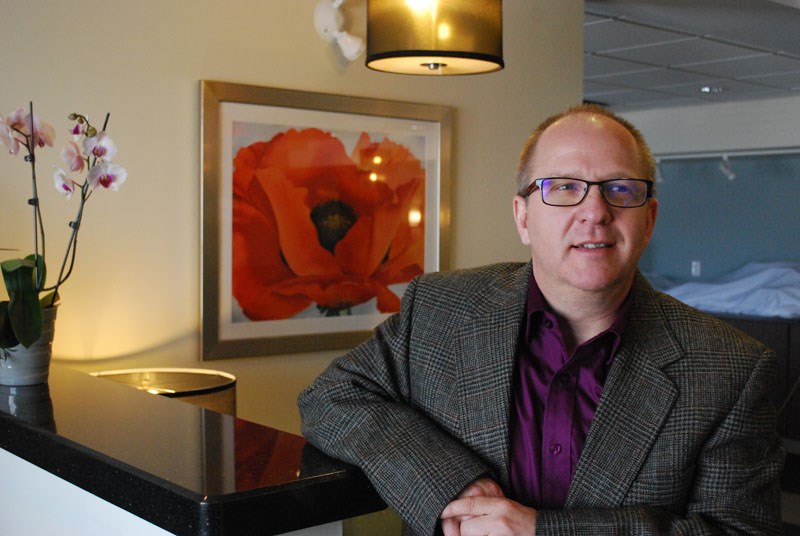Getting homeless people off the street and into permanent housing is not impossible, but it requires the people who provide service to homeless people, as well as society as a whole, to look at the problem from different angles, Wally Czech told about 10 people at an information session in Thompson March 28.
A member of the Canadian Alliance to End Homelessness’s (CAEH) training and technical assistance team, Czech is a clinical psychology therapist and previously served as the City of Lethbridge’s housing first specialist.
Housing first, which has been adopted in Thompson in the form of Project Northern Doorway, simplifies the question of how to end homelessness in the most obvious of ways: putting homeless people in housing. But to do it properly, service agencies often have to change the way they do things. And, even then, it isn’t a magic bullet to end the problem of homelessness, which exists because the demand for affordable housing exceeds the supply.
On any given night in Canada, Czech said, 35,000 people are homeless and a total of 235,000 will experience periods of homelessness over the course of the year. But the interactions these people have with emergency medical services, the police, hospitals and mental health specialists cost $7 billion per year in Canada - simply to maintain the status quo. Czech said every $10 spent on support services for people before they get to this point can result in almost $22 in savings.
Housing first, which reverses the classic approach to dealing with homeless people in which they are expected to make progress on their mental health and addiction problems before they can get into permanent housing, not only reduces the number of homeless people, but usually results in cost savings, too. In Thompson, says Canadian Mental Health Association and Thompson Homeless Shelter executive director Paullette Simkins, it costs $68 per night to put someone up in the shelter but only $30 per night for those in transitional or permanent housing.
As Czech pointed out, a common perception is that people who are on the streets are there because of mental illness, addiction and poor choices. In reality, those are the visible symptoms and the root causes include education, health, the justice system, the housing market, employment issues, poverty, trauma and the government child protection system. In Alberta, he said, 43 per cent of homeless people were in government care as children, while the total number of children in care in that province is about one per cent of the population. People who have experienced neglect are 13 times more likely than the population at large to experience homelessness, while physical abuse increases the likelihood 16 times and sexual abuse about 1.7 times. Those who have experienced more than one of those things are 26 times more likely to experience homelessness in their lifetimes.
“To begin to end this problem we have to change our perspective about how we see these individuals,” Czech said. “They’re in the position that they’re in for things that are not their fault. These people didn’t choose to be homeless. They are all there because of the impacts of things, for the most part, our system has created.”
He also noted that there are varying categories of homeless people, about 80 per cent of whom are transitionally homeless, with another 10 to 15 per cent episodically homeless at various points in their life and only five to 10 per cent chronically homeless. These latter two groups, said Czech, are the people at home the housing first concept is aimed.
Under the traditional view of how to get people with addictions and mental health issues off the streets, types of housing of greater and greater permanence are doled out for achievements such as getting treatment for their addictions or mental health problems, but Czech said that does not take into account that recovery is rarely a linear process and that traditional addiction treatment programs that require abstinence from alcohol or substance use only work about five per cent of the time. Despite that, when people relapse, they go back to the beginning of the journey towards permanent housing. Nevertheless, he told participants, we all know people with addictions and mental health problems who manage to successfully maintain a place to live.
One thing housing first should not be, Czech said, is a freebie.
“People need to pay rent,” he said, up to a maximum of 30 per cent of their income.
“We believe everybody is housing-ready,” said Czech. “All people, regardless of circumstances, with proper supports can improve their lives. We have to believe that people can change given the proper supports.”
There’s no way to predict who will be successful in a housing first model and who will not, though Czech said 80 to 90 per cent of people in such programs will stay housed. The reason why the people who are considered hardest to house are best suited for housing first programs are because they are the ones causing the biggest drain on resources by remaining on the streets and because they are at the most at risk.
“We prioritize the most complex individuals closest to dying on the street,” he said.




